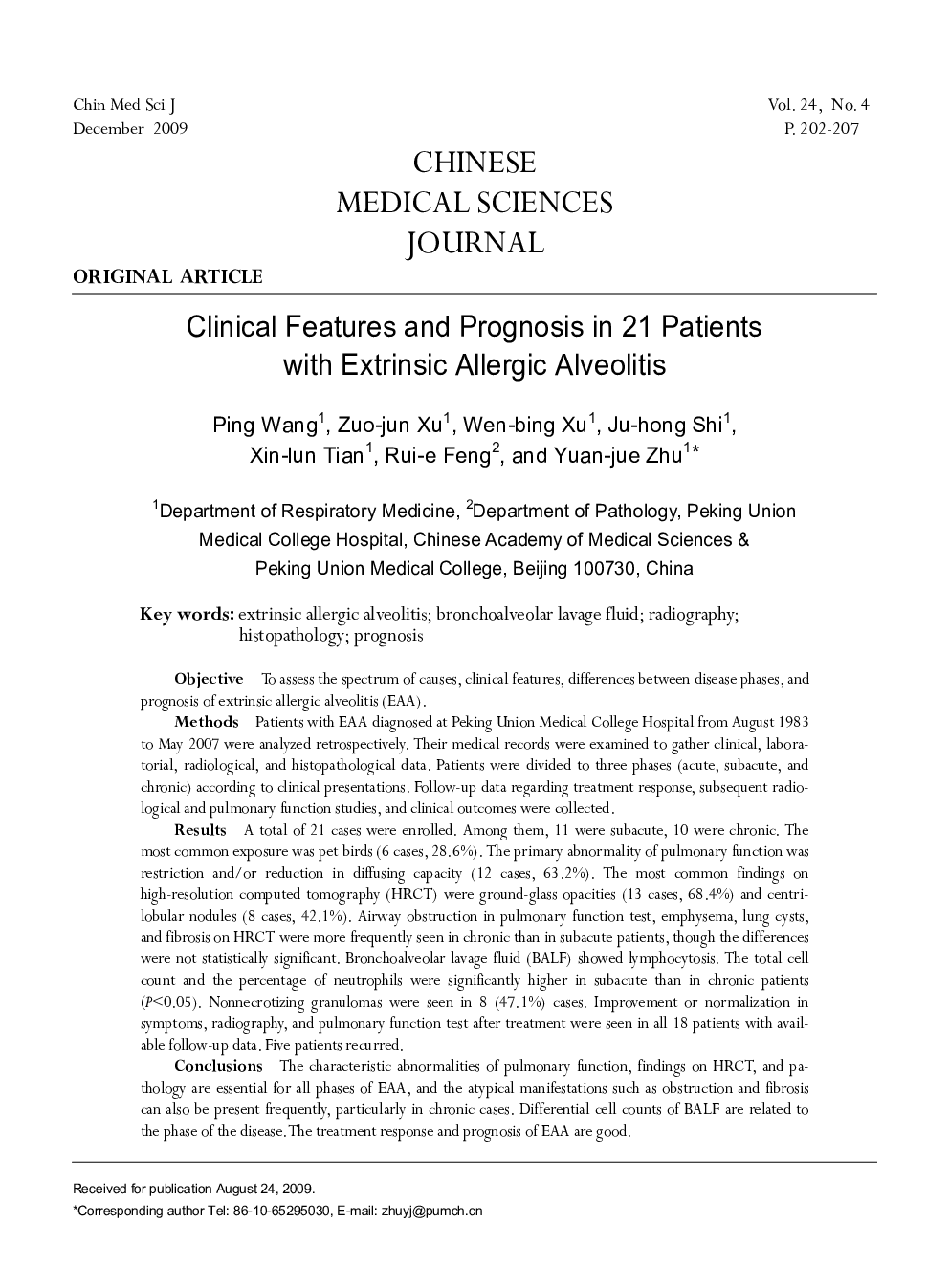| Article ID | Journal | Published Year | Pages | File Type |
|---|---|---|---|---|
| 3459582 | Chinese Medical Sciences Journal | 2009 | 6 Pages |
ObjectiveTo assess the spectrum of causes, clinical features, differences between disease phases, and prognosis of extrinsic allergic alveolitis (EAA).MethodsPatients with EAA diagnosed at Peking Union Medical College Hospital from August 1983 to May 2007 were analyzed retrospectively. Their medical records were examined to gather clinical, laboratorial, radiological, and histopathological data. Patients were divided to three phases (acute, subacute, and chronic) according to clinical presentations. Follow-up data regarding treatment response, subsequent radiological and pulmonary function studies, and clinical outcomes were collected.ResultsA total of 21 cases were enrolled. Among them, 11 were subacute, 10 were chronic. The most common exposure was pet birds (6 cases, 28.6%). The primary abnormality of pulmonary function was restriction and/or reduction in diffusing capacity (12 cases, 63.2%). The most common findings on high-resolution computed tomography (HRCT) were ground-glass opacities (13 cases, 68.4%) and centrilobular nodules (8 cases, 42.1%). Airway obstruction in pulmonary function test, emphysema, lung cysts, and fibrosis on HRCT were more frequently seen in chronic than in subacute patients, though the differences were not statistically significant. Bronchoalveolar lavage fluid (BALF) showed lymphocytosis. The total cell count and the percentage of neutrophils were significantly higher in subacute than in chronic patients (P<0.05). Nonnecrotizing granulomas were seen in 8 (47.1%) cases. Improvement or normalization in symptoms, radiography, and pulmonary function test after treatment were seen in all 18 patients with available follow-up data. Five patients recurred.ConclusionsThe characteristic abnormalities of pulmonary function, findings on HRCT, and pathology are essential for all phases of EAA, and the atypical manifestations such as obstruction and fibrosis can also be present frequently, particularly in chronic cases. Differential cell counts of BALF are related to the phase of the disease. The treatment response and prognosis of EAA are good.
